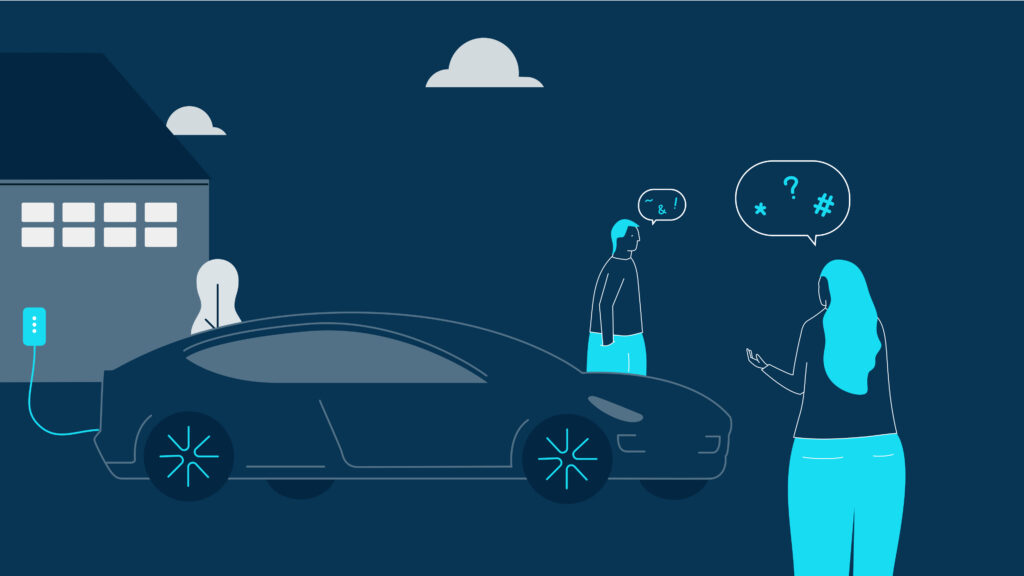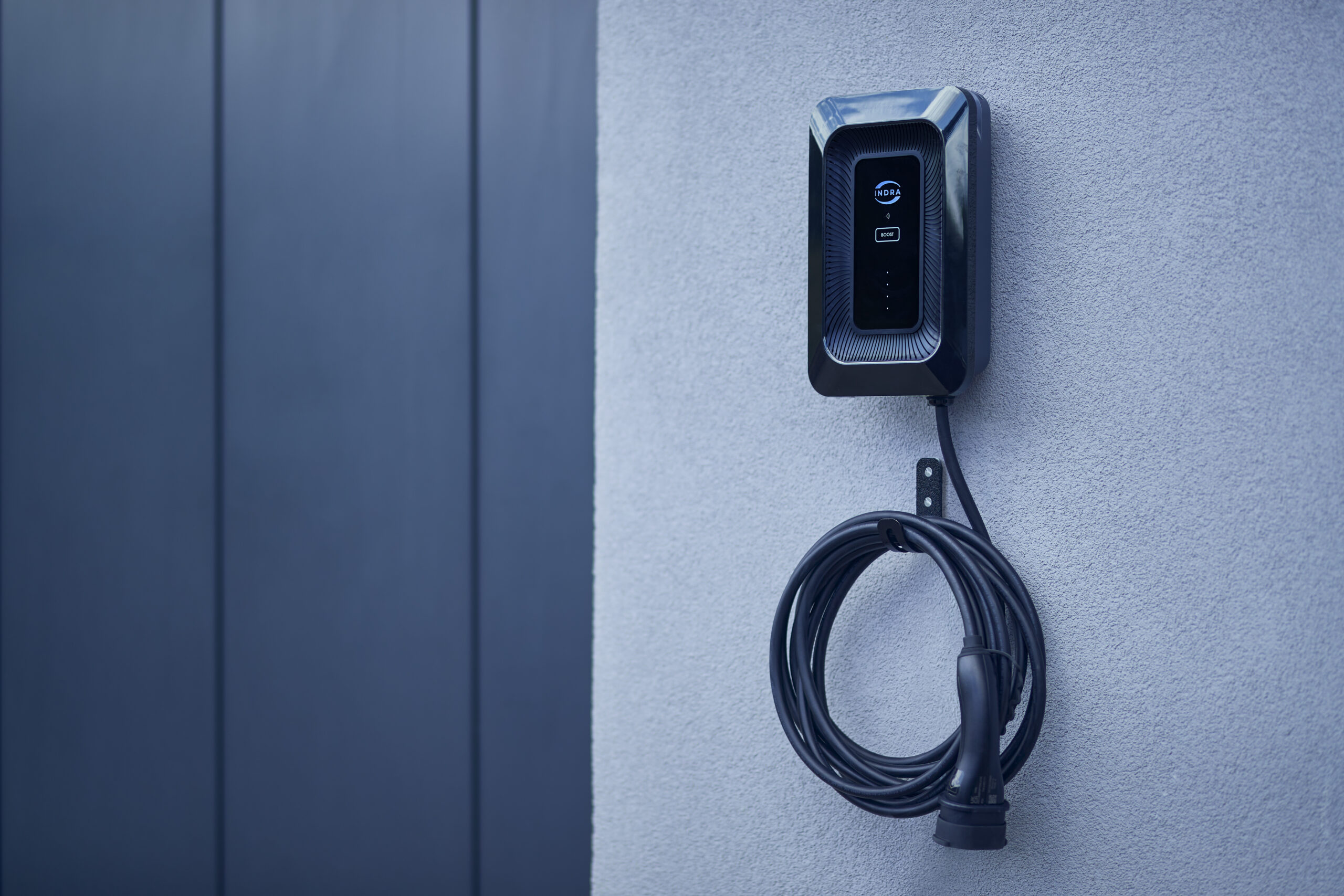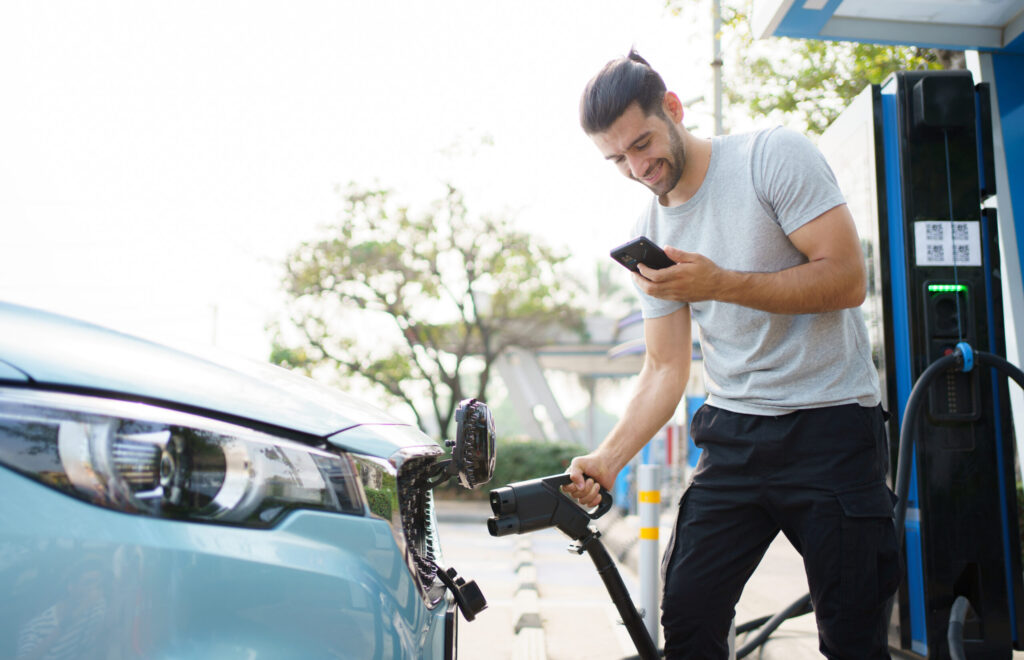
Language is a fascinating thing, with anything up to 1,000 new words being added to dictionaries every year.
Shakespeare is credited with inventing or popularising around 1,700 words which are part of everyday speech today, such as ‘lonely’, ‘eventful’, ‘generous’, ‘swagger’ and even ‘eyeball’. He also coined phrases such as ‘brave new world’ and ‘all’s well that ends well’.
Since the advent of the internet, language has evolved to include ‘Wi-Fi’, ‘router’, ‘dongle’ and even ‘World Wide Web’ to help us navigate and describe the changing technological landscape.
The world of electric vehicles (EVs) is riddled with acronyms and phrases that can, at times, feel like a foreign language. So, this article is going to try and address some of the more common ones to help demystify some of the communication around EVs for those beginning to dip their toes into electric cars.
Let’s start with the cars themselves:
ICE – Internal Combustion Engine (runs on petrol or diesel)
EV – Electric Vehicle (general umbrella term for electrified vehicles)
BEV – Battery Electric Vehicle (fully electric, no petrol or diesel engine)
FCEV – Fuel Cell Electric Vehicle (powered by hydrogen fuel cells)
PHEV – Plug-in Hybrid Electric Vehicle (uses both a battery that can be recharged by plugging in as well as a petrol or diesel engine)
HEV – Hybrid Electric Vehicle (battery plus petrol/diesel engine, but cannot be plugged in)
MHEV – Mild Hybrid Electric Vehicle (a small electric motor supports the petrol or diesel engine but cannot drive the car on its own.)
No, this isn’t the name of the Aussie rock band; AC and DC refer to the flow of electric current.
To break the science stuff down into simple terms, DC, or Direct Current, means the electrons all flow in one direction, from the negative to the positive terminal of a power source. DC is used in powering electronic devices, for charging batteries and powering some renewable energy systems, such as solar panels. AC, or Alternating Current, means the electrons oscillate back and forth and reverse directions at times.
AC is used in high-voltage power transmission and distribution, for powering homes and businesses. It can be stepped up or down with transformers (not the movie!), whereas DC voltage is more difficult to transform.
What does this mean for a car? Well, the electric grid gives AC, but EV batteries need DC. Different types of chargers deliver different types of charge. Domestic chargers using Type 2 connectors supply AC to the car and the charger built into the car converts from AC to DC.

Charge: 7kW or 22kW
Where: Europe, Australia and New Zealand
Notes: The most commonly used charging type. It is used as the standard for AC charging in the UK. Virtually every modern EV sold since 2015 in the country uses it. Generally, either 7kW (single phase) or 22kW (three-phase) for faster charging.
Charge: 50kW to 350kW
Where: UK and Europe
Notes: Also known as CCS2, this charging connector is used for rapid or ultra-rapid charging, and it is used by all the newer EVs in the country. It has two extra DC pins underneath the standard Type 2 charger. This is the main connector for long-distance rapid charging, and it is generally only found at service and petrol stations.
Charge: 25kW to 100kW
Where: UK and Europe
Notes: The name for this charging connector comes from the Japanese phrase “O cha de mo ikaga desu ka”, which means ‘how about a cup of tea?’, referring to the time it takes to charge a car. Developed by various Japanese car manufacturers such as Nissan, Mitsubishi and Toyota, it is still found on older EV models but is being phased out for CCS or CCS2 as fewer new chargers support it.
kW – Kilowatt, this is the rate of power of the electricity that can flow into the car battery, so the higher the number, the faster the charging. The speed the car can use the electricity to move is also rated in kW. The higher the kW, the more power, meaning the car can accelerate faster.
kWh – Kilowatt-hour, this is the capacity of the EV’s battery, or how much electricity the car can hold or can use over time. Imagine kW as being how fast water comes out of a tap, and kWh as how much water is collected in a bucket under the tap.
MPH Charging – Miles of distance you can drive after charging for one hour.
Many people confuse levels and modes, and put simply, the 'level' refers to the rated power, voltage and current of the charging system, whereas the 'mode' categorises the method of power delivery, protection installation and communication or control of the charging system. Levels tend to be more customer-focused terminology, whereas modes are understood widely by installers.
Level 1 Charging – this is very slow, like plugging your car into a normal 3-pin plug. It allows about 3-5 miles of driving for every hour you charge.
Level 2 Charging – this is a medium speed, like a home or public charger, which gives about 20–40 miles of range per hour of charging, such as overnight or while shopping.
DCFC (DC Fast Charging), or Level 3 Charging – this is rapid charging, giving you 100+ miles in 15–30 minutes.
Ultra-Fast Charging or Megawatt Charging (‘Level 4’) – this gives 350 kW and above and can charge to nearly full in minutes.
The battery has a 'brain' to make sure it doesn't overcharge or fully discharge, while keeping cells balanced and safe.
DOD – Depth of Discharge (the percentage of the battery that has been used compared to the overall capacity of the fully-charged battery)
BMS – Battery Management System (like the ‘brain’ of the battery, it makes sure the battery doesn’t overcharge or discharge, to completely flat, keeping the cells balanced and safe)
LFP – Lithium Iron Phosphate (a type of battery that is safer, lasts longer and is cheaper to make. The range tends to be shorter as it stores less energy. A bit like a durable, reliable backpack in bag terms)
NMC – Nickel Manganese Cobalt (more energy dense, smaller and lighter, but more expensive to make. It can degrade faster if not well managed. In bag terms, it’s a bit like a flashy sports bag; holds less and needs more care)
SOH – State of Health – A bit like a fitness score for the battery. At 100% SOH, the battery is new and working at full strength. At 80% it can only hold 80% of the energy it could when it was new.
SOC - State of Charge – this is simply how full or empty the battery is at any given moment. A bit like a fuel gauge, it tells you how much is inside the tank, not how healthy it is.
SOP - State of Power - this indicates the maximum power that can be accepted or delivered by the battery at a given time.
Cycle life – this is the number of full charges to discharge cycles an EV battery can undergo before losing significant capacity and holding less power. The more cycles it has, the older and weaker it gets.
Charging curve - this describes how fast an EV charges at different states of battery fullness, for example, fast at a low percentage SOC and slower at a higher percentage level.
EVSE - (Electric Vehicle Supply Equipment) describes the charger hardware which delivers electricity to an EV.
Smart charger - this is a charger that connects to the internet and integrates intelligently to manage, schedule, and charge at specific times, considering lower energy rates, grid capacity and renewable availability. Government legislation means all EV chargers installed in the UK must have smart functionality to manage the increased demand on the electricity grid.
Charger types -
Socketed: The charger has only the charging socket, and drivers need to use their own charging cable. This offers flexibility for different connector types.


Smart EV tariffs – These are rates offered by electricity providers that offer cheaper electricity for charging at the lowest rate at times that suit the energy company. This eases grid demand, supports renewable energy use, and reduces costs.
Connector / Plug – The official UK term for what you physically plug into the car to connect it to the charger. (It is sometimes called a “gun” in Asia, but this is not common in the UK.)

Socket / Inlet – The part on the car where the connector plugs in
Roaming – The ability to use multiple networks with a single account, using an app or card; a bit like using a mobile phone on other networks when you travel abroad. Examples of roaming accounts include Octopus Electroverse, Rightcharge, Paua, BP, Shell and Allstar Chargepass, to mention a few.
OCPP (Open Charge Point Protocol) - this is like a common ‘language’ that EV chargers use. OCPP is the language chargers use to communicate with their controlling platform, in our case, 'Indraverse'. It also enables the charger to be controlled by a CMS (Charger Management System).
OCPI - (Open Charge Point Interface) – this is how different networks talk to each other, sharing charger locations, prices and availability. It’s like having a bus pass that works on all buses, rather than needing a new ticket every time.
RFID - (Radio Frequency Identification) – this works like contactless card payments, without PINs, passwords or facial recognition. Just a quick tap with a card or fob and the charger knows it's you and starts charging your car.
Plug & Charge – A system where the car and charger recognise each other, you just plug the car in to start charging, and it recognises you and the car and how to bill you. No card, app or tapping, it’s like having an in-built contactless card in the car.
Idle fees - these are penalty fees charged if a car stays plugged in after charging is complete, to keep chargers available to other drivers.
ISO 15118-20 – this is an international standard for communication between EVs and chargers, a bit like the ‘language’ they use to talk to each other. It covers things like Plug & Charge, smart charging and V2G or bidirectional charging. It’s not a legal requirement for the moment, but soon all EV chargers will have to meet these standards, the next generation communication rules for EV charging to make it smarter and safer.
“V2G/V2H ready” – this term is used to explain that the car and the EV charger have the right technology inside to send power back out of its battery, not just take it in. It means that one day your car could help to power your house (V2H) or even sell energy back to the grid when peak demand is high (V2G).
Chharge Point Management System - (CPMS) - this is the software platform used by charge point operators (CPOs) and fleet managers to monitor, control, and optimise EV charging infrastructure.

Load Management/Dynamic Load Balancing – this has two elements. The technical term is 'load curtailment' and refers to how the charger manages the power it uses to prevent the main house fuse from being overloaded. It is also used to refer to load balancing, which is distributing the available power among multiple chargers to avoid overloading.
Load shifting - this is an umbrella term for either the customer or the energy provider moving the energy use to when the demand is lower, or when there's an excess of power to be used more effectively.
Demand side response (DSR) – this is when energy providers adjust electricity use based on grid needs, such as moving EV charging to off-peak times to balance supply and demand and support grid stability. It is generally an automated process controlled by the energy providers within a flexible tariff system, such as OVO's Charge Anytime or Octopus Intelligent Go.
Consumer-led flexibility (CLF) – this is where households or businesses opt into schemes where they actively adjust their energy use to help balance the demand for power on the grid. By opting in and customers can earn rewards and money off their electricity bills.
Peak / Off-Peak – these terms refer to time-of-use electricity prices. Peak is generally during the day and evening when prices are higher due to greater demand. Off-peak hours are often at night when demand is low, making prices cheaper and an ideal time to charge EVs to reduce grid strain and save money.
OEMs - OEM stands for Original Equipment Manufacturer. In the car industry, OEMs are companies like Ford or Tesla that design and build vehicles. In the charger industry, OEMs supply hardware or components for charging systems.
V2X / Bidirectional – Vehicle to Everything (V2X)
In the car OEM world, V2X means a real-time, high-speed wireless communication framework that enables EVs to interact with other external systems, such as other vehicles (V2V), infrastructure like traffic lights (V2I), pedestrians via their devices (V2P), networks (V2N), as well as grids and buildings (V2G, V2B). In the car OEM world, bidirectional as a term means where communication is a “two-way street”.
In the EV charging world, V2X, or bidirectional, means an EV and charger system that can both receive and send electricity. The power goes into the car battery but can also be sent back to power the house, other buildings or networks, or sold back to the grid - offering new opportunities for savings and sustainability. The technology for this is becoming more available soon in the UK, but it isn’t widely used yet
Grid Codes – these are technical rules and standards that electricity providers, generators and users must follow to ensure the safe, stable and efficient hooking up to the national power grid, as we do with our bidirectional chargers. They cover aspects like voltage, frequency, connection requirements and how energy sources interact with the wider electricity network.
G100 – this is a UK engineering standard that governs how distributed generation (like solar panels, batteries or EV chargers) can export electricity to the grid. It ensures exported energy doesn’t exceed set limits to prevent overload and keep the grid safe, compliant and balanced.
DNO (Distribution Network Operator) – A DNO manages the regional electricity networks that deliver power from the national grid to homes and businesses. They don’t generate electricity but ensure safe distribution. They assess grid capacity and manage local network constraints.
CPO (Charge Point Operator)/Back Office - the company that manages and operates the charging hardware and software.
V2G – Vehicle to Grid - means that your EV can return energy to the grid, selling power back when it needs additional power. The technology for this is still in trial phases, but it is soon to become a reality, creating greater options for green energy.
V2H – Vehicle to Home – means your car can power your house, so if there’s a power cut, your lights, internet, and fridge can stay on. It’s like having a giant battery pack in your driveway. You can charge it during off-peak periods, or from your solar panels, and use it to power your home during peak periods.
V2LL - Vehicle to Load - means you can connect appliances directly to your car, for example, you could power a fridge from the car when you're out camping.

Hopefully, this helps to make the world of EV driving and charging a little bit less daunting and more accessible. As the momentum grows towards electric driving and greener, more sustainable living, these terms and expressions will become more a part of our everyday vocabulary. For more information about our award-winning, top-spec EV chargers, which are smart EV tariff-ready, see our full range of chargers.
 | About the author: Sonya joined Indra in July 2025 as Senior Content and Marketing Executive. She is a content writer with several years of experience who is now using her expertise to help Indra communicate their branding, products, and the benefits of EV driving for both individuals, society and the planet. |